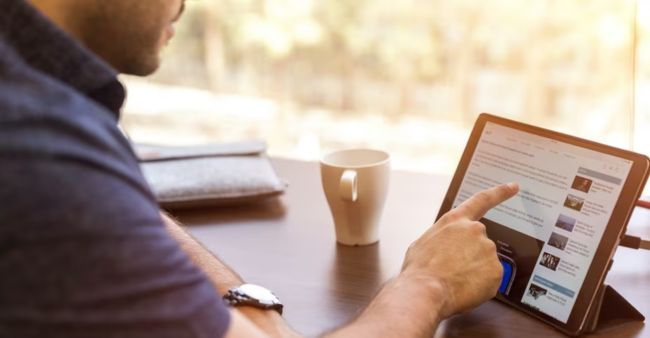Due to initial irritants being faced by some MPs, special training sessions are being organised for them.
NEW DELHI
The paperless operation of the new Parliament building and its high-tech security and mobility App provisions are proving to be a tough nut to crack for some MPs. In view of the initial irritants being faced by parliamentarians, special training sessions are being organised for them, said sources.
Many MPs were seen facing problems in adjusting to the new paper-less working style of the new Parliament building on the first day of work when the women’s quota bill was presented in Lok Sabha.
Even Prime Minister Narendra Modi supported such a training programme for MPs and urged Lok Sabha Speaker Om Birla to organise a training for the parliamentarians on using the new technology. Interestingly, a new mobility app has been created to help MPs navigate the 64,000 square-metre mega structure and understand nuances of the artificial intelligence-driven 3D facial recognition and biometric access systems.
“Just as an orientation programme is held for first-time MPs, a briefing might be held on the mobility app and the security drill,” said a top functionary.
Before the switch to the new Parliament building, a mock Parliament was run for five days—with staffers playing the role of president, PM, Speaker—during the week preceding is first sitting to test the functioning of all systems and facilities. Taking forward the lessons learnt from security lapses exposed in the 2001 Parliament attack, a world-class security net has been put in place for the new Parliament building.
It has many security zones that shall be open to specific categories of users, including parliamentarians, officials, media and general visitors. Smart cards with embedded chips would be provided to visitors. The cards, developed by CDAC under the ministry of electronics and information technology, would allow the security wing to monitor the live location of all visitors. Areas like the India art gallery have the most basic and non-intimidating security restrictions for the general public, said an official. The gallery has been conceived along with two other art galleries including the Sangeet Deergha where instruments of music maestros like Pandit Ravi Shakar, Ustad Amjad Ali Khan and Ustad Bismillah khan will be on display for public from 18 September.
Elsewhere, access control may be seen by way of restrictions on the movement of MPs and Parliament staff within the new building. Sources said not all MPs may get access to the PMO.
Investigators who probed the Parliament terror attack had hinted that the attackers were probably briefed about the layout plan of the circular parliament building by someone who had conducted a recce of the entire area. Now, the proposed curbs on the movement of different categories of users in the new Parliament building are being seen as precautionary measures to keep high-security zones out of bounds for most of the building users.
Sources said elaborate trial runs were held for testing the MPs’ facial recognition software that automatically opens flap-gates when the parliamentarians reach about six metres or closer to the building’s entry points. A data bank of thumbprints of parliamentarians has also been created. Apart from facial recognition tech, thumbprints could also be used for opening entry gates. A unique PIN would also be given to all authorised users for entering restricted zones.
The top-level security at the new Parliament building seem to be in line with a note on the project that said the structure is being
The parliament security staff has also got special training and their dress has changed from dark grey safari suits to military camouflage. After the culmination of the special Parliament session, a three-day meeting of the international presiding officers will be held from 12 October.
Earlier, a political storm had erupted over the new dress code for Parliament staff with the Opposition parties objecting to the printing of lotus – national flower but also the election symbol of the ruling BJP – on their dresses.
Designed by the National Institute of Fashion Technology (NIFT), the new dresses include new turbans for the House marshals and magenta Nehru jackets, lotus-printed cream shirts and khaki trousers.

